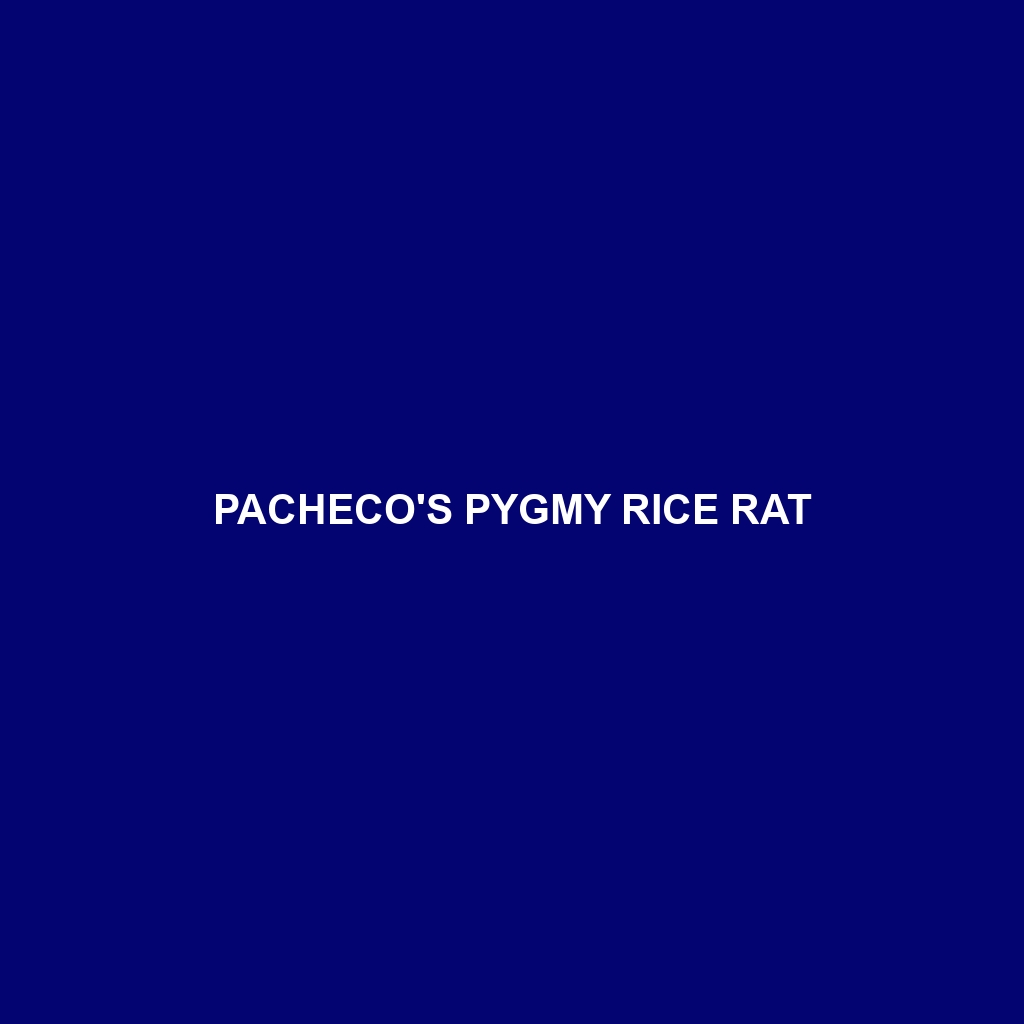Pacheco’s Pygmy Rice Rat
Common Name: Pacheco’s Pygmy Rice Rat
Scientific Name: Oligoryzomys pachecoi
Habitat
Pacheco’s Pygmy Rice Rat is primarily found in the tropical and subtropical regions of South America, particularly in the Amazon Rainforest and surrounding areas. This species thrives in wetlands, rice fields, and areas with dense vegetation, where it can find ample cover and moisture.
Physical Characteristics
This small rodent averages about 10 to 12 cm in body length and features a long, scaly tail that can exceed its body length. The fur is generally soft and ranges from brown to reddish-brown on the back, while the underparts are lighter, typically a creamy color. Notable distinguishing features include large eyes and ears, which aid in its nocturnal activities.
Behavior
Pacheco’s Pygmy Rice Rat is known for its nocturnal habits, being most active during the night. These rodents are skilled climbers and often build nests in dense vegetation. They display social behavior, frequently foraging in small groups, which helps them evade predators. Their agility allows them to navigate their environment efficiently, making them elusive to both prey and researchers.
Diet
The diet of Pacheco’s Pygmy Rice Rat primarily consists of seeds, grains, and fruits. They are especially known to forage in rice paddies, where they take advantage of the abundant food supply. This rice rat’s feeding habits play a crucial role in seed dispersal, affecting the growth of various plant species in their habitat.
Reproduction
In terms of reproduction, Pacheco’s Pygmy Rice Rat has a breeding season that often coincides with the rainy months, allowing for abundant food resources for its young. A typical litter consists of up to five offspring, which are born blind and helpless. The young are cared for by both parents until they are capable of venturing out on their own, typically within a month of birth.
Conservation Status
Currently, Pacheco’s Pygmy Rice Rat is listed as vulnerable due to habitat loss from agricultural expansion and deforestation. Conservation efforts are essential to protect their habitat and ensure the survival of this unique species.
Interesting Facts
- Pacheco’s Pygmy Rice Rat is often mistaken for other rodent species, making it a key subject in the study of rodent biodiversity.
- This species is a vital participant in the ecosystem, contributing to the health of its environment through its feeding and behavior.
Role in Ecosystem
Pacheco’s Pygmy Rice Rat plays a significant role in the ecosystem by acting as both a consumer and prey. It helps manage plant populations through its feeding habits and serves as a food source for larger predators, such as birds of prey and snakes. Understanding their ecological interactions is essential for maintaining the health of their natural habitat.
